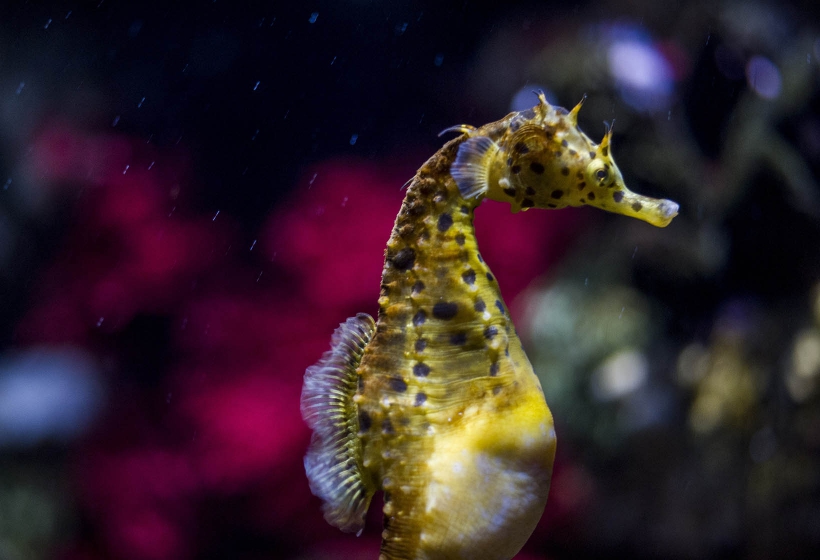Pot-bellied seahorse

Biology
The pot-bellied seahorse is one of the largest seahorse species in the world with a length of up to 35 centimetres. Its characteristic big rounded belly is more distinctive in the male. Both sexes are easily distinguished; the males are much heavier and pigmented, with a bigger tail and a shorter and more robust snout. At night, it forms small groups that swim slowly. During the day it remains immobile, concealed among algae and sponges. Like other seahorses, they are poor swimmers, using the prehensile tail to grip onto algae, branches, and even artificial structures. Their eyes are able to work independently on either side of their head, this is particularly useful as they hunt by “ambushing” their prey (small crustaceans), sucking them whole through their tube-like snouts.
Conservation
As it is a shallow coastal species it is extremely susceptible to human activities, which threaten and degrade its habitat. It is vulnerable to bycatch. In addition, they are considered valuable traditional medicine in Asia, and are often sold as souvenirs.
Curiosities
During mating, the female transfers her eggs to the male which he fertilizes in his pouch. The male incubates the eggs for 28 days, and dozens of young juveniles are expelled through contraction.
